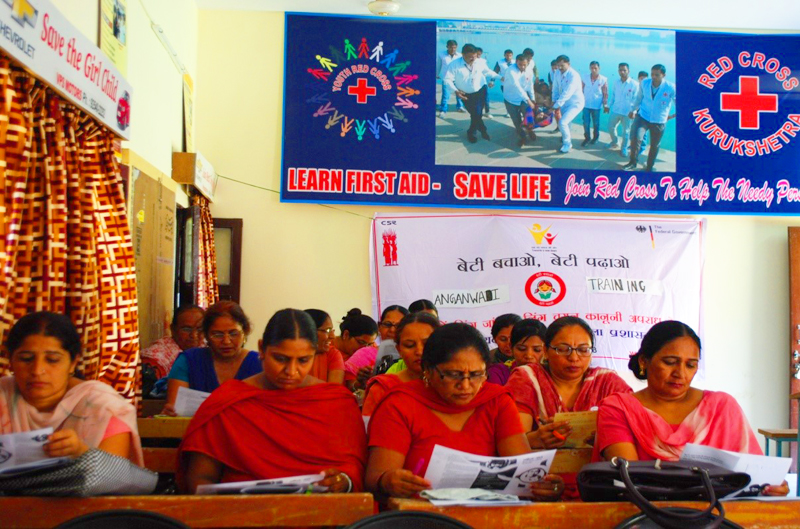In May this year, Minister of Women and Child Development, Smt Maneka Gandhi, launched a software, permitting the online digitization of the Aanganwadi Centres of the country. The web enabled online digitization will strengthen the monitoring of the service delivery of Aanganwadi Centres in the country. The digitization includes a Rapid Reporting System to collect the online data on Integrated Child Development Services (ICDS) scheme from Aanganwadi Centres (AWCs) by introducing simplified aanganwadi monthly progress report (AWMPR). This digitization is expected to help the fulfillment of the goals of the Aanganwadi Centres.


Aanganwadi Centres were started by the Indian government in 1975 as part of the Integrated Child Development Services program to combat child hunger and malnutrition. A typical Aanganwadi centre provides basic health care in the villages and its a part of the Indian public health care system. Basic health care activities include contraceptive counseling and supply, nutrition education and supplementation, as well as pre-school activities. The centres may be also be used as depots for oral rehydration salts, basic medicines and contraceptives.
Smt Maneka Sanjay Gandhi said that this digital solution will revolutionize the monitoring of service delivery of Aanganwadi centres since Aanganwadi workers had to earlier fill as many as 11 registers, which was a lengthy and time consuming task. “The modernization of the system will help us to get real time reports from the grassroot level”, Smt Maneka Gandhi explained. The introduction of this technology will also develop and test new interventions, implementation approaches and data measurement systems to deliver quality service to tackle the problem of under-nutrition in India.


In order to fill gaps in the ICDS Scheme, the Ministry Of Women And Child Development is implementing International Development Association (IDA) assisted ICDS Systems Strengthening and Nutrition Improvement Project (ISSNIP), in 162 high burden districts of 8 States in the country covering 3.68 lakh Aanganwadi Centers. The ISSNIP has been now restructured and it includes ICT-enabled Real Time Monitoring (ICT-RTM) of ICDS which has been launched today. ICT-RTM would specifically help strengthen the ICDS capacity to deliver nutrition services in the following ways:
a. Help improve service delivery by Aanganwadi workers (AWWs) by introduction of mobile technology
b. Provide real-time information on service delivery at Aanganwadi Centers and on growth and nutrition status of children. Assist in growth monitoring and promotion; and impacting delivery of nutrition and health services
c. Enable to employ timely interventions wherever and whenever required and to prioritize and direct the interventions needed to improve the nutritional status in specific geographies.
d. Auto generation of ICDS registers that are currently compiled manually by Aanganwadi workers and help ICDS staff save time in data entry into multiple registers, thereby enabling them to channelize more time on delivering ICDS services including increased focus on counseling
e. Help in reaching out to all the beneficiaries in time.
f. Support the Aanganwadi worker’s job through in-built counseling aids, alerts and auto plotting of graphs and due lists
g. Aid collection of real-time data enabling supportive supervision and timely intervention by the department officials
ICT-RTM are to be driven by a customized Common Application Software (ICDS-CAS). ICDS-CAS is customized common application software developed by Bill and Melinda Gates Foundation (BMGF). It would be deployed in two applications, viz. Aanganwadi Worker Application and Supervisor Application. Aanganwadi Worker Application will run on Android Smart Phones and Supervisor Application will run on Tablets. Besides, ICT-RTM would provide web-based Dashboards at Block, District, State and Central levels.
With technology growing leaps and bounds, it is but a matter of time that archaic and traditional methods of data collection and analysis are replaced by more efficient softwares and applications, to reduce the chance of human error, and also enable better availability of information to Aanganwadi Centres across the country. We heartily appreciate this move, and feel that this will lead to a definite improvement in the quality of services provided by the Aanganwadi Centres, across the country.
(The information for this article has been taken from the original press release by the Government of India which you can access here)
Discuss this article on Facebook




